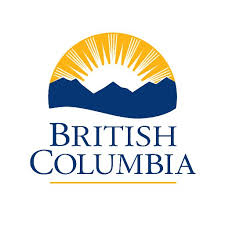habitat
Type of resources
Available actions
Topics
Keywords
Contact for the resource
Provided by
Years
Formats
Representation types
Update frequencies
status
Service types
Scale
Resolution
-
Energy class layer produced by EMODnet Seabed Habitats as an input layer for the 2021 EUSeaMap broad-scale habitat model. The extent of the mapped area includes the Baltic Sea, and areas of the North Eastern Atlantic and Arctic extending from the Canary Islands in the south to Norway in the North. The map of energy classes was produced using underlying wave and current data and thresholds derived from statistical analyses or expert judgement on known conditions. This layer is the same as the input used in EUSeaMap 2019. A report on the methods used in the 2021 version of EUSeaMap (Vasquez et al., 2021) and reports on previous versions (v2016 and V2019) are linked in Online Resources.
-
Arctic mask shapefile produced by EMODnet Seabed Habitats as an input layer for the 2021,2023 and 2025 EUSeaMap broad-scale habitat models. Used as a proxy to delimit the Arctic zone and it is used to classify shallow habitats into Arctic habitat classes as required by the EUNIS 2022 habitat classification. Details on the methods used to classify EUSM are present in the report linked in the Online Resources (Vasquez et al., 2021a). The masks covers areas in the Barents Sea which are North of the polar front or where ice concentration exceeded 20% on average in 2018. The 20% threshold was derived from WMO ice classification and corresponds to "Very open drift ice". Created by the EMODnet Seabed Habitats project consortium in 2021, and used in the 2023 and 2025 versions of EUSeaMap. No updates have been made to this layer. A report on the methods used to create the layer are in the 2021 version of EUSeaMap (Vasquez et al., 2021b) and reports on previous versions (v2019 and v2023) are linked in the lineage. A report on the methods used in the 2025 version of EUSeaMap will be added in due course. Credit: Licensed under CC-BY 4.0 from the European Marine Observation and Data Network (EMODnet) Seabed Habitats initiative (https://emodnet.ec.europa.eu/en/seabed-habitats), funded by the European Commission.
-
Energy class layer produced by EMODnet Seabed Habitats as an input layer for the 2023 EUSeaMap broad-scale habitat model. The extent of the mapped area includes the Baltic Sea, and areas of the North Eastern Atlantic and Arctic extending from the Canary Islands in the south to Norway in the North. The map of energy classes was produced using underlying wave and current data and thresholds derived from statistical analyses or expert judgement on known conditions. This layer was updated in EUSeaMap 2023 using a new wave Kinetic energy at the seabed layer for the European Shelf area. A report on the methods used in the 2023 version of EUSeaMap and reports on previous versions (v2019 and V2021) are linked in Online Resources.
-
Energy class layer produced by EMODnet Seabed Habitats as an input layer (habitat descriptor) for the 2025 EUSeaMap broad-scale habitat model. The extent of the mapped area includes the Baltic Sea, and areas of the North Eastern Atlantic and Arctic extending from the Canary Islands in the south to Norway in the North. The map of energy classes was produced using underlying wave and current data and thresholds derived from statistical analyses or expert judgement on known conditions. This layer was updated in EUSeaMap 2025 using a the wave Kinetic energy layer at the seabed layer for the European Shelf area used in 2023 (linked in the Online Resources). An accompanying confidence layer is available for viewing and download from EMODnet Seabed Habitats. A report on the methods used in the 2025 version of EUSeaMap will be added in due course, but reports on previous versions (v2019, v2021 and v2023) are available in the lineage. Credit: Licensed under CC-BY 4.0 from the European Marine Observation and Data Network (EMODnet) Seabed Habitats initiative (https://emodnet.ec.europa.eu/en/seabed-habitats), funded by the European Commission.
-
This legacy Web Map Services will no longer be maintained on an ongoing basis as of December 31, 2015. It will be removed from operations as of March 31, 2016. To see the latest in DataBC WMS services please go to http://openmaps.gov.bc.ca.
-
Shapefile showing areas where ice concentration in the Barents Sea in 2018 was on average more than 20%. The 20% threshold was derived from WMO ice classification and corresponds to "Very open drift ice". Data averaged by Ifremer and NIVA derived from CMEMS (Copernicus) ice concentration product (resolution 1km, temporal resolution 1 year- 2018). Used in EUSeaMap 2021 to create the Arctic mask layer as an input layer for the 2021 EUSeaMap broad-scale habitat model Created by the EMODnet Seabed Habitats project consortium. A report on the methods used in the 2021 version of EUSeaMap (Vasquez et al., 2021) and reports on previous versions (v2016 and V2019) are linked in Online Resources. Credit: Licensed under CC-BY 4.0 from the European Marine Observation and Data Network (EMODnet) Seabed Habitats initiative (www.emodnet-seabedhabitats.eu), funded by the European Commission.
-

Distribution of Black Oystercatcher habitat in coastal British Columbia showing relative abundance (RA) by season and overall relative importance (RI). RI is based on project region and not on the province as a whole. CRIMS is a legacy dataset of BC coastal resource data that was acquired in a systematic and synoptic manner from 1979 and was intermittently updated throughout the years. Resource information was collected in nine study areas using a peer-reviewed provincial Resource Information Standards Committee consisting of DFO Fishery Officers, First Nations, and other subject matter experts. There are currently no plans to update this legacy data.
-

Stand structure habitat classes associated with mule deer winter range in the Cariboo Region.
-

CryoGeographic Consulting, in association with Palmer Environmental Consulting Group Inc., provided Yukon Energy, Mines and Resources and Yukon Environment with the results of the mapping and classification of wetlands and adjacent upland habitat in the Indian River valley and its major tributaries. This report and its accompanying map set have been updated to reflect study area expansion and additional field reconnaissance completed in the summer of 2017. Interpretation of shallow water wetlands within disturbed landscapes was completed by Ducks Unlimited Canada and incorporated. Five classes of wetlands are distinguished - bogs, fens, swamps, marshes and shallow water - based on field investigations and interpretation of high-resolution aerial photography and satellite imagery. The accompanying report w it h full metadata can be downloaded from: [https://yukon.ca/en/mapping-and-classifying-wetlands-indian-river-valley-yukon](https://yukon.ca/en/mapping-and-classifying-wetlands-indian-river-valley-yukon) Distributed from [GeoYukon](https://yukon.ca/geoyukon) by the [Government of Yukon](https://yukon.ca/maps) . Discover more digital map data and interactive maps from Yukon's digital map data collection. For more information: [geomatics.help@yukon.ca](mailto:geomatics.help@yukon.ca)
-

The TEI Data Distribution packages in this folder contain of the full Terrestrial Ecosystem Information (TEI) dataset split into Predictive Ecosystem Mapping (PEM) data and non-PEM data which includes Terrestrial Ecosystem Mapping (TEM), Terrain Mapping (TER), Bioterrain Mapping (TBT) Terrain Stability Mapping (TSM), Sensitive Ecosystems Inventory (SEI), Soil Mapping (SOIL project boundaries only), and Wildlife Habitat Ratings (WHR project boundaries only) by Natural Resource Sector Region (see Index map .pdf). Data includes the Project Boundaries (with project metadata and links to related data such as reports), Long Table (detailed mapping polygons with the full RISC standard attribute table), Short Table (detailed mapping polygons with key and amalgamated (concatenated) attributes derived from Long Table), On-site Symbol features (point, line or polygon terrain features such as landslide tracks, scarps), Sample Sites (field sampling locations), and any user-defined tables. The data dictionary is also available. This data is in file geodatabase format. Current version: v11 (published on 2024-10-03) Previous versions: v10 (published on 2023-11-14), v9 (published on 2023-03-01), v8 (published on 2016-09-01) Note that the Soil Mapping dataset is available from: http://www.env.gov.bc.ca/esd/distdata/ecosystems/Soil_Data/SOIL_DATA_FGDB/
 Arctic SDI catalogue
Arctic SDI catalogue